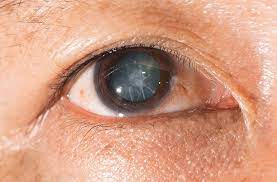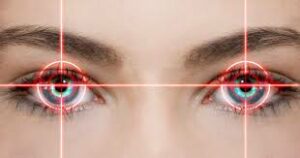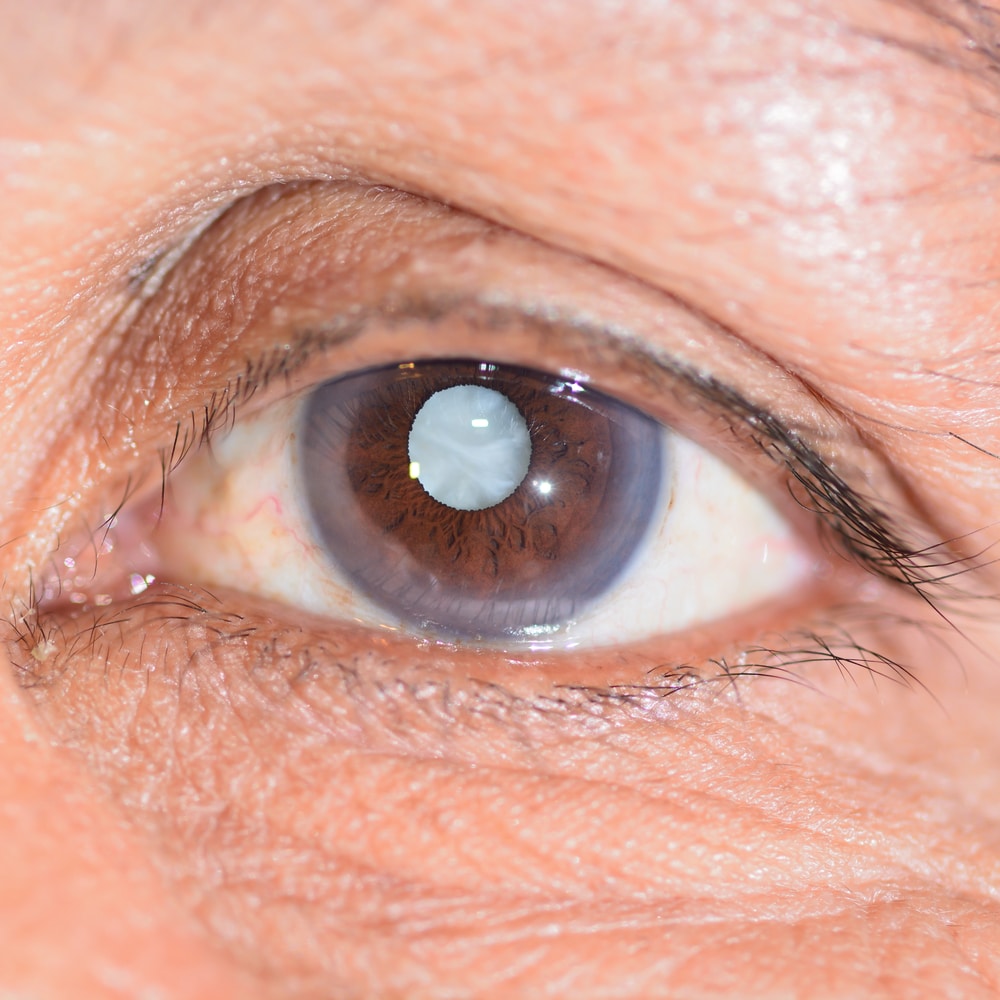A traumatic cataract is a type of cataract that occurs as a result of an acute injury to the eye. It’s most common in people under the age of 40 and is more common in men than women. Traumatic cataracts can be caused by several things, including a blow to the eye, a fall from a great height, or an impact on the eye with a hard object. In this blog, we’ll discuss the signs and symptoms of traumatic cataracts, what causes them, and how to treat them.
Contents
What is a Traumatic Cataract?

A traumatic cataract is a type of cataract which is caused by an injury to the eye. Traumatic cataract usually occurs as a result of a head or face injury, such as a hit to the head. The injury may cause swelling and inflammation in the tissue around the eye, which can lead to the formation of a cataract.
Traumatic cataracts are particularly common in athletes who suffer from concussions or other head injuries. In some cases, the cataract can develop immediately after the injury, while in other cases it can take months or even years to develop. Also, traumatic cataracts are more common in people who are over the age of 50.
The origin of a traumatic cataract is usually located in the middle of the eye, near the pupil. This is where the swelling and inflammation from the injury cause the lens to become cloudy. Over time, this cloudiness can lead to the formation of a cataract. There is no specific treatment for traumatic cataracts, other than to treat the underlying injury that caused the cataract. However, if the cataract is severe, it may need to be removed.
Causes of Traumatic Cataracts

The reasons for traumatic cataracts are not completely understood. However, it is believed that the cause of traumatic cataracts is a combination of several factors, including:
Trauma to the eye
One of the most common causes of traumatic cataracts is trauma to the eye. This can happen when the eye is hit by an object, when the eye is squished, or when the eyeball moves out of its normal position in the eye.
This trauma makes it difficult for the eye to function properly. Over time, the eye can become misshapen and swollen, which can lead to a traumatic cataract.
Age
The age of a person can also be a factor in the development of a traumatic cataract. As people age, their eyes become less elastic and more fragile. This can lead to more frequent and severe eye injuries, which can in turn lead to the development of a traumatic cataract.
Maybe there are other factors at play as well, but these are the most common causes of traumatic cataracts.
Diabetes
One of the factors that are linked to a higher risk of developing traumatic cataracts is diabetes. Diabetes is a condition in which the body doesn’t produce enough insulin. Insulin is a hormone that helps move glucose from the blood into cells in the body.
Insulin resistance is a common complication of diabetes. This means that the body has difficulty using insulin properly. In some cases, this can lead to high blood sugar levels and diabetes complications, including traumatic cataracts.
A chemical imbalance in the eye
The chemical balance of the eye is also important in the development of a traumatic cataract. When there is a chemical imbalance in the body, this can lead to problems throughout the body.
One of the consequences of a chemical imbalance in the eye is the development of a traumatic cataract. This happens when certain chemicals in the eye become toxic and build up over time.
Some of these chemicals are produced during injury or inflammation. When this happens, it can cause damage to the eye and lead to the development of a traumatic cataract.
Smoking and drinking
Another factor that is linked to a higher risk of developing traumatic cataracts is smoking and drinking. Smoking can cause inflammation in the eyes, which can in turn lead to the development of a traumatic cataract.
Drinking can also damage the eye and lead to the development of a traumatic cataract. Alcohol is a toxin that can damage the eye tissue, and it can also increase the risk of developing other types of eye injuries.
Symptoms of Traumatic Cataract
Many people don’t realize that traumatic cataracts can be a very serious condition. Traumatic cataracts are caused by blunt trauma to the eye, most commonly from a fall or a punch. Symptoms of traumatic cataracts can include:
Blurry Vision
One of the most common signs of traumatic cataracts is that the person’s vision becomes blurry. This can be due to the trauma causing a temporary clouding of the lens in the eye, which makes it difficult for the person to see clearly.
Sensitivity to Light
Traumatic cataracts can also cause sensitivity to light, making it difficult for the person to see in bright conditions or when using electronic devices. This can be a serious problem because it can make it difficult for people to work or travel.
Inability to Read Fine Print
Because traumatic cataracts can cause sensitivity to light, people with the condition can also have difficulty reading the fine print. This can be a major issue for people who need to read medical documents or government paperwork.
Inability to See at Night
Traumatic cataracts can also cause difficulty seeing at night, which can be particularly problematic for people who are blind. This means that they will find it much more difficult to get around and live their lives as usual.
Constant Headaches
Another common symptom of traumatic cataracts is headaches. This is because trauma to the eye can cause inflammation and pain in the brain, which in turn causes headaches. These headaches can be very severe and can make it difficult for people to function during the day.
If you are experiencing any of the symptoms listed above, it is important to see a doctor as soon as possible. If left untreated, traumatic cataracts can lead to more serious conditions, including blindness.
How to Treat Traumatic Cataracts?

Treating traumatic cataracts requires a combination of medical and surgical treatment. A cataract is a clouding of the lens of the eye, and traumatic cataracts result from injury to the eye.
Doctors may prescribe painkillers and an eye patch to help relieve the discomfort associated with traumatic cataracts. If the cataract is in the center of the lens, a surgical procedure called phacoemulsification is often needed to remove it. If the cataract is located on the edge of the lens, laser surgery can be used to break it up and remove it.
Some of the other treatment methods for traumatic cataracts include:
Intraocular lens (IOL) implantation – If the cataract is large or located in an area that is difficult to clear, an IOL may be inserted into the eye. IOLs are usually worn for several years, and they can help improve vision. IOLs are a type of artificial eye.
If the cataract is large or located in an area that is difficult to clear, an IOL may be inserted into the eye. IOLs are usually worn for several years, and they can help improve vision. IOLs are a type of artificial eye.
Surgical removal – If the cataract is small or located on the edge of the lens, it may be removed through surgery.
If the cataract is small or located on the edge of the lens, it may be removed through surgery. LASIK
Laser-assisted in situ keratomileuses (LASIK) is a surgical procedure that uses lasers to reshape the cornea, which can improve vision.
Phacoemulsification – Phacoemulsification is a surgical procedure used to break up and remove cataracts located in the center of the lens.
PRK: A variation of laser surgery that uses a very small amount of heat instead of lasers to break up and remove cataracts.
Can You Prevent Traumatic Cataracts?
There are certain things that you can do to try and prevent a traumatic cataract. Some of these prevention methods include:
Avoiding exposure to bright sunlight or artificial light (such as from digital devices)
One of the most common causes of cataracts is a gradual increase in exposure to bright sunlight or artificial light, so it is important to be mindful of this and try to avoid such exposures when possible. A good way to do this is to use sunscreens when going outside, and also to keep electronic devices out of direct sunlight.
Regularly washing your face and eyes with soap and water
Another simple way to help prevent cataracts is to regularly wash your face and eyes with soap and water. This will help remove any dirt, oil, or other debris that can build up on the surface of the eye, which can then lead to cataracts.
Taking vitamin D supplements
The vitamin D that we get from sunlight is important for our overall health, but it is also important for the health of our eyes. Research has shown that people who are deficient in vitamin D are more likely to develop cataracts. So if you can’t get enough sun exposure, consider taking a supplement to help ensure your eyes are getting the dose of vitamin D they need.
Eating a balanced diet that includes antioxidants and omega-3 fatty acids
Also, it is important to eat a balanced diet that includes antioxidants and omega-3 fatty acids. These nutrients have been shown to help protect the eye from disease and damage, including cataracts. These nutrients can be found in plenty of foods, including fruits and vegetables, eggs, nuts, and seeds.
Conclusion
If you are experiencing symptoms such as a decrease in vision, eye pain, or light sensitivity, it is important to seek medical attention as soon as possible. Traumatic cataracts can be caused by several factors, including accidents and blows to the head. In some cases, they may even be hereditary. If you think you may have suffered from a traumatic cataract, the following guidelines have provided you with the information you need to make an informed decision about your treatment.
Cataract surgery is a safe and painless procedure. At MantraCare we have a team of experienced eye surgeons, who will be happy to answer any questions on cataract surgery. Call us at +91-9711116605 for any inquiries.
